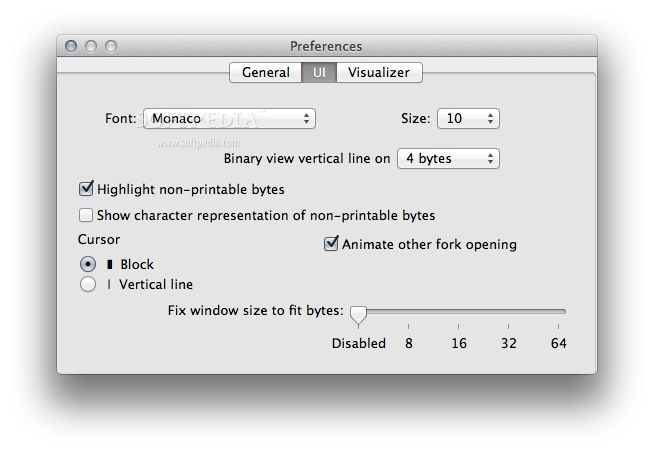
There is another way to visualize image bloat: the strings command. In fact, the screen shots above are from the public Zoompf Alerts account for !
0XED HEX EDITOR FREE
Our commercial product Zoompf WPO, and our newly launched free public beta of Zoompf Alerts, both include a “View optimization as hex” feature. We found the hex view so effective in showing people image bloat, we built it into our products.
0XED HEX EDITOR DOWNLOAD
It is simply increase the size of the file, wasting bandwidth and needlessly increasing download times. This data has nothing to do with the graphical data for the image. Needlessly to say, you shouldn’t be seeing large strings of English text inside of an image file.Īs we scroll down, we start to see more English text, and then we see embedded XML!Īll of this junk is exactly the type of stuff you want to remove from the images on your website. Immediately we can see English text, taking about Adobe Photoshop CS 5. Most hex editors feature a column on the right, which shows the ASCII output of the bytes in the file. Right now the size of this image is 218 KB, which seems a little high considering its dimensions are 1 x 620. Any hex editor can be used, provided that it includes the ability to display the ASCII output of the bytes. There are some desktop hex editors like HxD or 0圎D, and there are also web-based hex editors. They also can show you bloat in your losslessly optimized images. Hex editors lets you examine the contents of binary files. Is there a way to do this? Yes! Today I will show you 2 ways: With a hex editor, and with the strings command. To actually you show them all the waste and bloat and unneeded crap that is sitting inside their JPEG or PNG image. While its great to tell someone that an image can be reduced by 20%, I have found that sometimes it is helpful for people to actually visualize what that savings looks like. This is a great way to lose page load wait by losing page content weight. And images have embedded thumbnails, you can see savings upwards of 50%-70%. For lossless image optimization, you can expect to consistently reduce the size of your image files by 5%-20% without impacting image quality. Luckily, they are super easy to optimize with free and/or open source tools. Images dominate the web in terms of both byte size and request count. If you really want to know how, we insist you figure it out yourself and direct you to read through PKSM's code.I’m a big fan of image optimizations, and have written several posts about it.
0XED HEX EDITOR HOW TO
It is possible to unlock them (see screenshots below), but you will not be told how to unlock them. You may see this called different names at times, such as:īytes that are locked (greyed out) are like that for a reason: it is usually far more dangerous to edit them compared to unlocked bytes, especially if you don't know what values are legal for the particular byte. represents how many times the hex editor needs to be unlocked in order to edit the field's value.įor fields that span multiple bytes, be aware that Pokémon stores data in little-endian format. The table below lists all of the exclusive fields for each of the supported formats that you can edit. In order to edit those you will need to go into the hex editor and find the appropriate byte(s). While PKSM's normal editor screens allow you to change many things about your Pokémon, there are some things that don't appear on them. The controls are pretty simple: navigation is done with the d-pad or circle pad and edits can be made with A (increase byte's value), X (decrease byte's value), or the touch screen. For those fields that don't show as a number in-game, you will also need to find some kind of reference for what values mean. You will need to be able to convert values between decimal and hexadecimal (you can easily find a tool to help with this online). There is a learning curve to using the hex editor.
0XED HEX EDITOR PLUS
For bytes that are unlocked, there are also editing controls in the form of plus and minus buttons above and below the value of the byte and/or labeled boxes for toggling flags kept in that byte. The bottom screen shows the index of the currently selected byte, it's value, and sometimes a translation of the value into a more understandable version (like the Species bytes).

If a byte is grayed out/disabled, you will need to unlock it before you can change it. The byte that is current selected has a box around it, and it's purpose is briefly described at the bottom of the screen. The top screen shows the Pokémon you're editing in raw hex. When you first open it, you'll be greeted by a screen that looks completely different from the other Editor screens you've seen so far. It can be accessed by tapping the block of purple letters in the upper-right corner when editing a Pokémon in the Editor. The Hex Editor is an incredibly powerful, and potentially intimidating, tool PKSM provides you for editing your Pokémon.


 0 kommentar(er)
0 kommentar(er)
